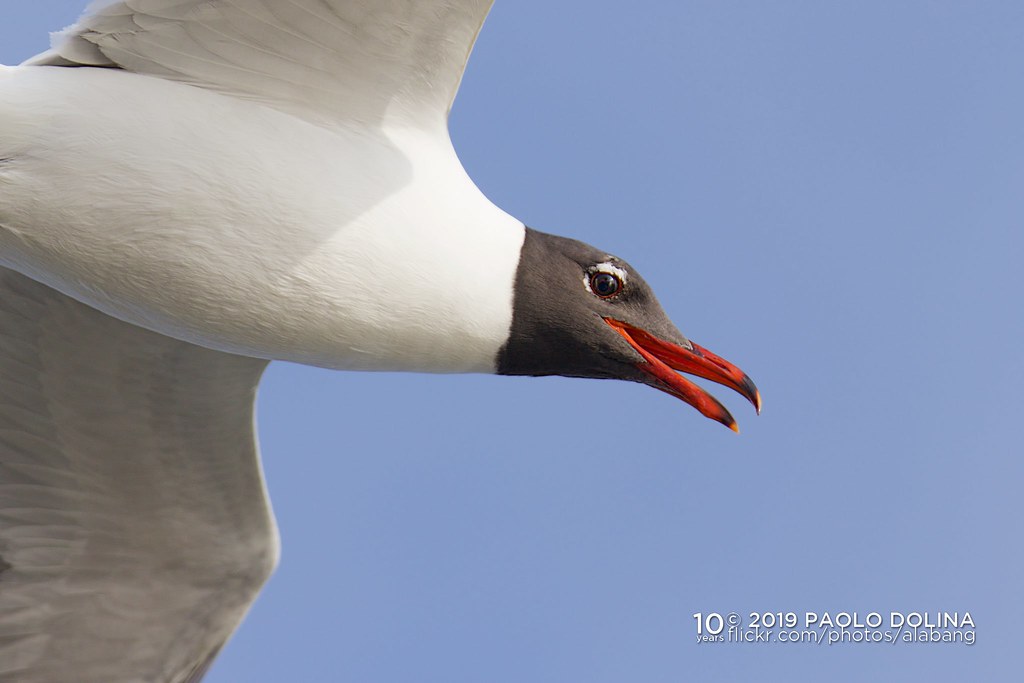Pao Dolina
Active member

Laughing Gulls (Leucophaeus atricilla) by Paolo Dolina, on Flickr
If one has ever heard a group of Laughing Gulls (Leucophaeus atricilla) calling, the English Name of this species is no surprise. They do indeed have a cackling laugh-like call. During the breeding season this is a black hooded gull with white crescents above and below the eyes; above it is mid-grey and white below including the tail. The primaries lack any white mirrors, and only show small white tips, so the wing pattern is a rather simple one for a gull. What is distinctive is the very long and drawn-out look of this species. The bill is long, and even looks to droop; the head, neck and body are also long. But what stands out are the very long legs, often looking like they stand on stilts, and the very long wings. In flight the long and skinny wings are distinctive. It is closely related to the Franklin’s Gull (Leucophaeus pipixcan) and shares many similarities in plumage with that species, although it may in fact be much more closely related to the largely dark Grey Gull (Leucophaeus modestus) and Lava Gull (Leucophaeus fuliginosus). Laughing Gulls are found in coastal regions with warmer water from Mexico to Peru on the Pacific, and the N United States to N Brazil on the Atlantic coasts. They are migratory but these migrations are complex. For example, they are found throughout the year on the United States Atlantic Coast, although northernmost ones retreat, while in the Lesser Antilles they are only present during the summer, the breeding season.
Source: https://neotropical.birds.cornell.edu/Species-Account/nb/species/laugul/overview
Location: https://goo.gl/maps/aw5fUow7rrp
